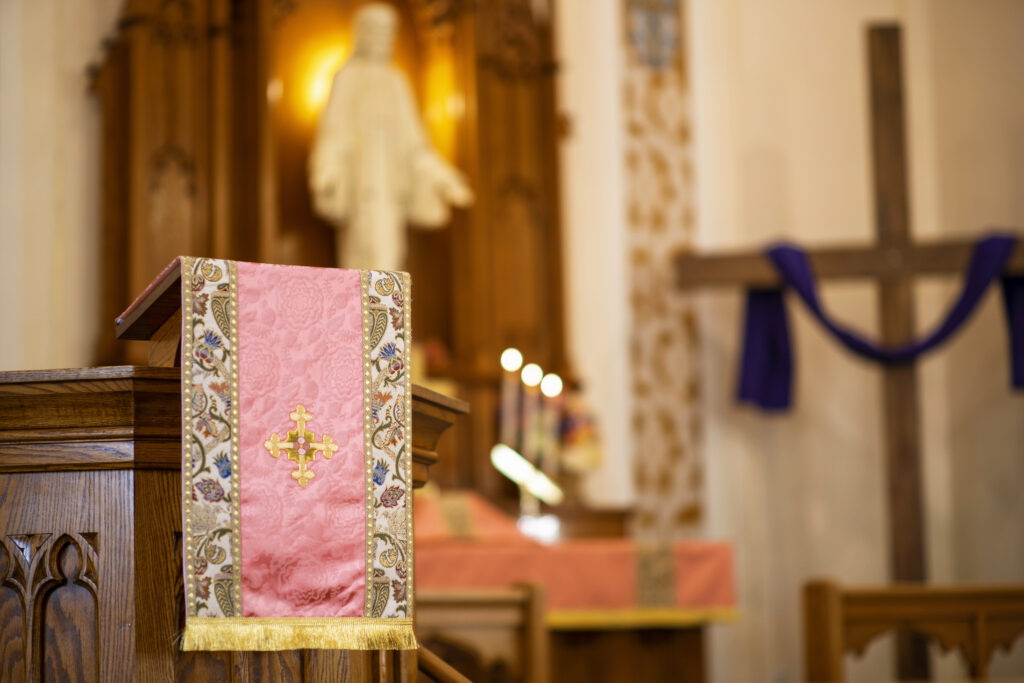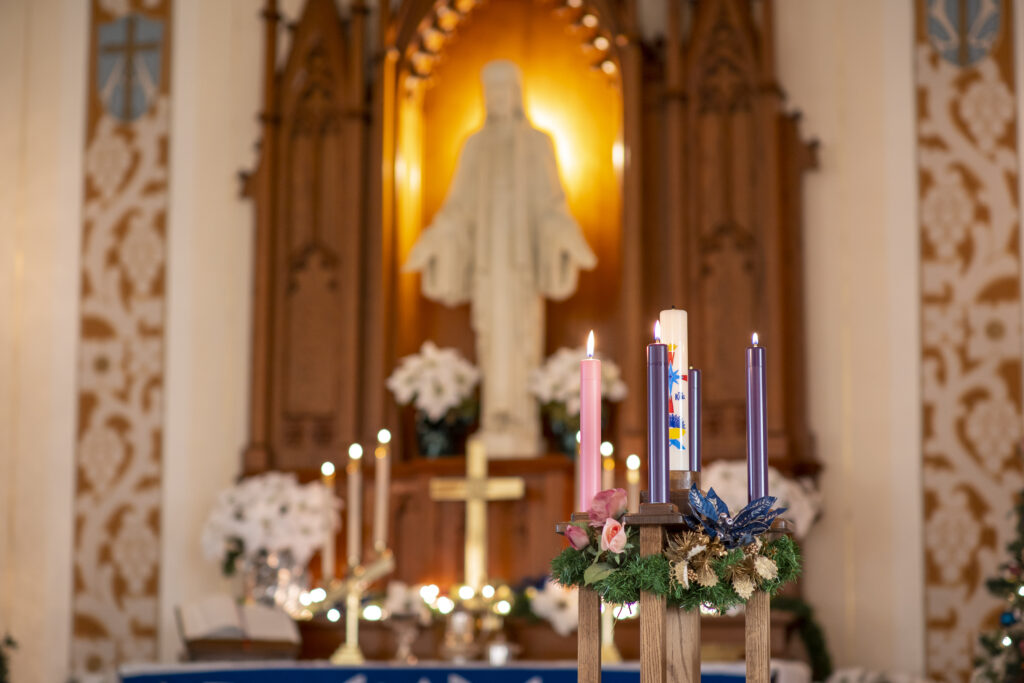







There are a number of Sundays in the historic church year that have a special joyful emphasis. Their names even mean “rejoice!” Gaudete Sunday is the 3rd Sunday of Advent; Laetare Sunday is the 4th Sunday in Lent; and Jubilate Sunday is the 4th Sunday after Easter. On these days, the color reflects the emphasis of joy. On both Gaudete Sunday and Laetare Sunday the color changes to rose (a more pale shade of pink that has tones of red and gold) (Jubilate Sunday remains white as white is the used for the most joyous of days already). This change is brief – a single Sunday in the midst of longer seasons – but the break in the midst of these seasons causes us to “lift up our hearts.”
The idea behind the color rose is a lightening of the color violet. For centuries, violet, or purple, has had associations with royalty or wealth. Dye for cloth was expensive, and purple was just about the deepest color, requiring the most dye. In the Bible, Lydia was “a seller of purple” (Acts 16). Just before Jesus was taken out to be crucified for being “the King of the Jews,” the soldiers mocked Him, and, besides putting a crown of thorns on his head, put a purple robe around Him. Violet, or purple is used in penitential seasons for this reason. But, on these “Rejoice” Sundays, some of the darkest dye is removed. The color left is rose. It is a reminder that, even in the darkest of days and seasons, Christians still have reason to rejoice. The penitential veil is lifted and the Scripture lessons point us to the comfort that the Word and Sacraments provide amidst the struggles of life.
The names for each of the “Rejoice” Sundays are taken from the Introits (Latin for “Entrance”) for the day.
On the 3rd Sunday of Advent we hear the Introit, “Rejoice in the Lord always. Again will I say, rejoice! Let your gentleness be known to all men. The Lord is at hand”(Philippians 4:4-5). In the Gospel lesson, John the Baptist is in a dark prison, likely despairing, but receives comfort from Christ’s Words of Promise brought to him by messengers (Matthew 11:2-10). Christ’s Word is our rose comfort amidst deep violet hardship.
On the 4th Sunday in Lent, we hear, “Rejoice with Jerusalem, and be glad with her, all you who love her; that you may feed and be satisfied with the consolation of her bosom” (Isaiah 66:10–11). In the Gospel, Christ feeds the 5,000 in the wilderness, displaying a typological foreshadowing of the Lord’s Supper. Christ says “I am the living bread which came down from heaven. If anyone eats this bread, he will live forever“ (John 6:51). Christ feeds us with His body and blood – food in the desert – consoling us with Himself, giving us rose joy in the midst of deep penitential violet.


Not all churches have rose paraments, but most churches, especially Lutheran churches, incorporate the color somehow (even perhaps without realizing it). The Advent Wreath, a tradition that began in the Lutheran church, uses a rose-pink candle on the 3rd Sunday in Advent. Many call this candle the “joy candle” for this reason. The color of the candle comes from the proper liturgical color for the day, rose. While the origin of the use of rose is unclear, it possibly dates back as early as the 8th century. The rubrics for various Lutheran church bodies give rose as an optional color for Gaudete and Laetare Sundays, with violet for the rest of the seasons and blue as an optional color for Advent.
Colors are one of the simplest ways to teach. My three-year old son walks into church every Sunday and asks “What color is today?” I rejoice that I get to explain it to him.
We are thankful to CM Almy for creating this set for us. It has been a work in progress over a number of years, when the first piece, a rose stole was generously gifted by a member. The majority of the cost of these paraments have been supplied through a Thrivent Action Team grant.

Leave a Reply